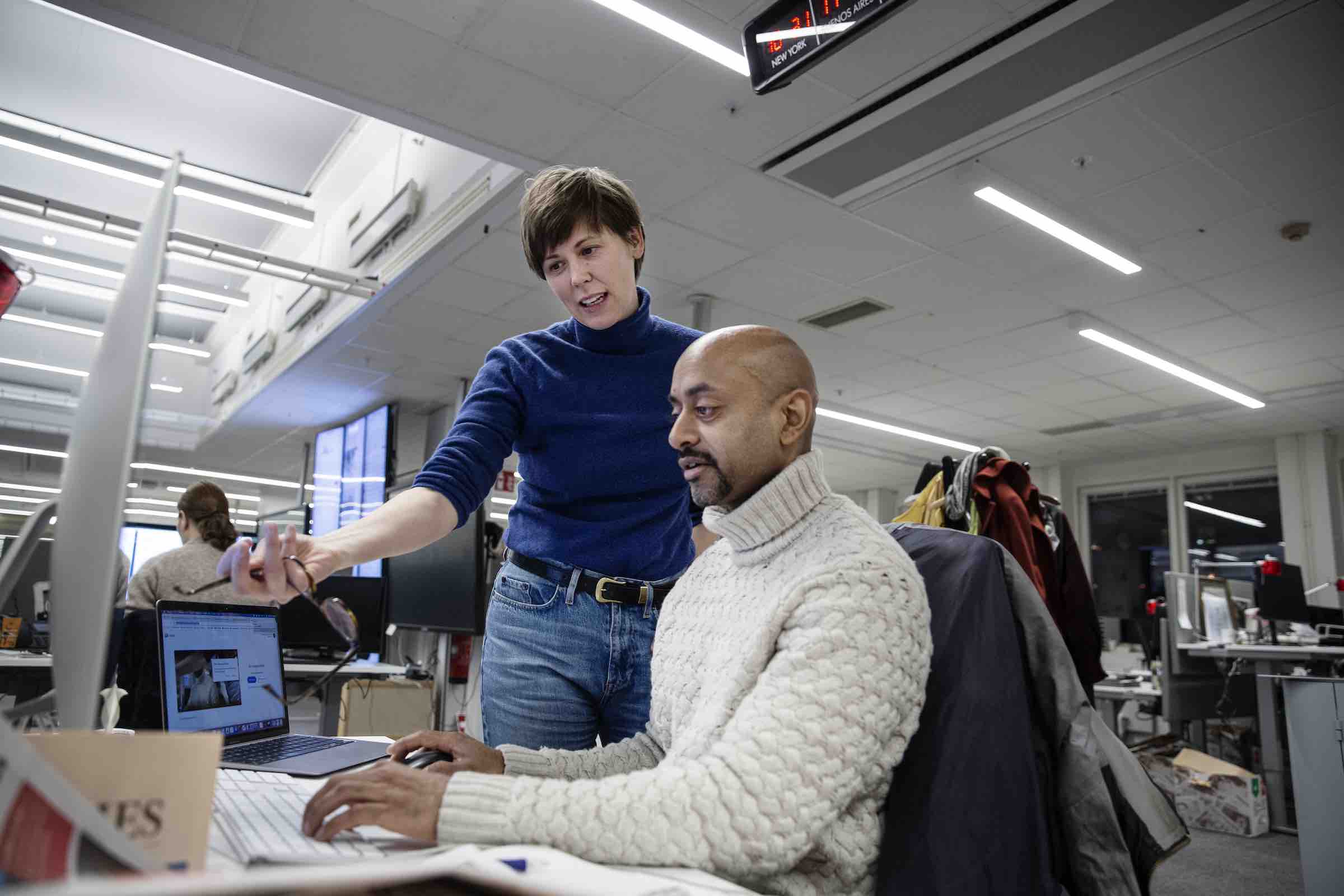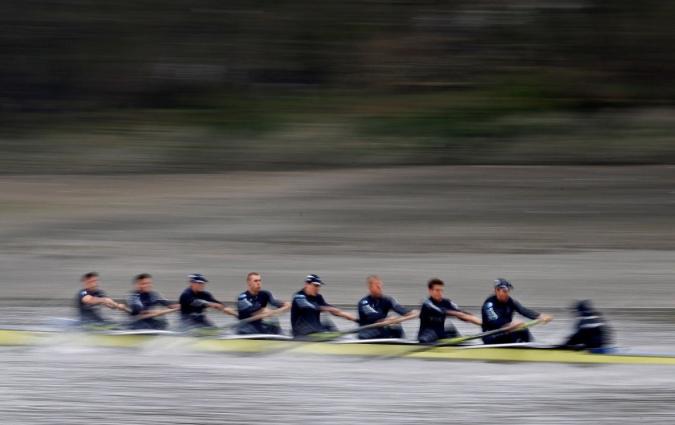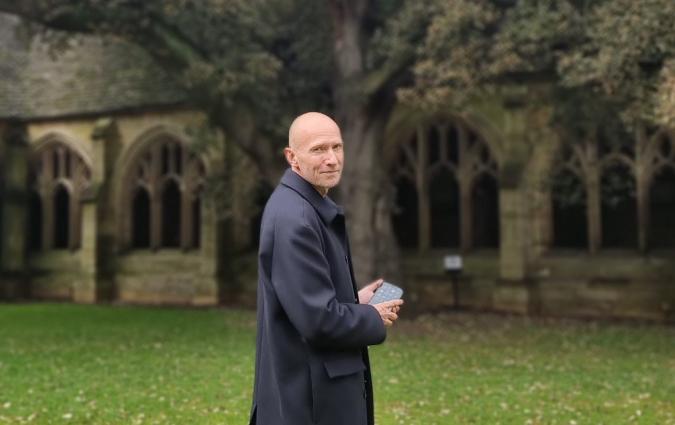Lessons in confronting old newsroom values and structures from ICIJ and AFP

Frida Sandgren with a colleague in the Dagens Nyheter newsroom. Credit: Lisa Mattisson/Dagens Nyheter
Have traditional news adapted enough to adequately cover the complex events of the 21st century?
An energy crisis, COVID-19 and war in Ukraine: three major events have forced us to reckon with how we survive the news cycle in the past 12 months. Look back 12 years, and you’ll find a global financial crisis, a refugee crisis, and an escalating climate crisis that affects the globe in uncountable ways.
As a breaking news editor at Swedish newspaper Dagens Nyheter I found myself on the editorial frontline during COVID-19, struggling to hold a team together via Google Meets and Slack messages.
To meet the challenges, I relied on the old familiar structure to get us through the day. In hindsight, I wish my newsroom and I had been more prepared to work cross-editorially and support each other as a collective.
Change is hard
Newsrooms say they want new workflow ideas. But when presented with them, the idea is either tweaked to fit old patterns or outright rejected. That’s the conclusion of Arne H. Krumsvik, Professor of Media and Communication at Kristiania University College in Norway, who studies media innovation.
He is not alone in that finding: the argument that newsrooms have been slow to innovate has been put forward by many researchers.
To be fair, traditional media institutions have adapted in many ways: they are doing better, more quickly, for less, according to Krumsvik – but not differently. The old hierarchies are still very much present.
“One of the things I’ve been puzzled by is [the tendency of] business models online to replicate the order of the paper, or the traditional business model,” he told me. One explanation for this might be that the framework for online news developed at the start of the digital era was shaped by senior members of the newsroom and their background in traditional media – the dominative culture.
What happens when we try?
We know that change is hard, but what happens when we try anyway? One example can be found in the International Consortium of Investigative Journalists (ICIJ) and their model of collaboration.
At its core, the ICIJ-model of collaboration boils down to a simple yet powerful formula: the sharing of knowledge and research among newsrooms and journalists, the division of bylines, and synchronised publication. Each newsroom retains full responsibility for its editorial and legal verifications, ensuring a robust and independent process. This collaborative approach enables a collective pursuit of truth while upholding the autonomy and integrity of individual journalistic entities.
According to Will Fitzgibbon, former senior ICIJ reporter and ICIJ's Africa and Middle East partnership coordinator, there is one question that must be addressed by both journalists and newsrooms first: what’s in it for me?
“Journalists don't believe in it and editors don't trust in it until they see the value of it. And that value might not always be immediate: it is a model that is understood by the reporters and editors and publishers who have seen it work in practice. That is why it can take a while sometimes to bring new partners onboard, because you do have to give up lots of your own ego. You have to share resources. You have to do all of those things that we’re not trained to do. […] The proof of the pudding is in the eating,” he told me.
Journalists and editors I interviewed said the main benefits of this approach were:
- Increased impact and visibility for both newsrooms and journalists – the story makes more noise when several outlets publish at the same time.
- Financial sustainability – newsrooms can spread the cost of handling millions of files and data, and a single source can feed multiple outlets.
- Publications with more detail – different audiences, countries and contexts require different angles. With cross border-collaboration the outcome becomes more nuanced.
- Better protection for journalists and their sources – a wide range of journalists and outlets reduces the risk of a single journalist being targeted.
New values, new structures
ICIJ collaboration provides a good example of new values, but what about new structures? For this, I turned to the AFP. In early 2022, the international news agency reorganised its Paris newsroom into specialised hubs.
The aim of the reorganisation was to strengthen their coverage of prioritised themes: for example, the future of the planet, and the digital world. Ursula Hyzy is head of the new Planet Hub, which groups together some 20 journalists with different specialities who were once split between the society department and the economics department. At its core the revolution here is to group specialities around addressing key societal challenges, instead of key economic concerns.
One of the main advantages, Hyzy said, is the simple fact of proximity: beat journalists who once worked across different departments with different managers are now in the same team, in the same room, and at the same meetings, which improves discussions and collaboration.
Another notable benefit following the reorganisation is the emergence of vibrant discussions within the newsroom. These discussions have resulted in an increased focus on stories highlighting potential solutions for the ongoing transformation, rather than solely focusing on the impacts of climate change.
Despite the radical transformation news has undergone from printed newspaper to smartphones and endless digital possibilities, many of us still deal with the ghost in the machine: the traditional newsroom structure.
ICIJ and AFP are only two examples of impressive initiatives embracing change to better serve the audience. For me, the conclusion is clear: if we put aside our ego, embrace radical sharing and listen to each other across real and imagined borders, we can do better work.
In every email we send you'll find original reporting, evidence-based insights, online seminars and readings curated from 100s of sources - all in 5 minutes.
- Twice a week
- More than 20,000 people receive it
- Unsubscribe any time




